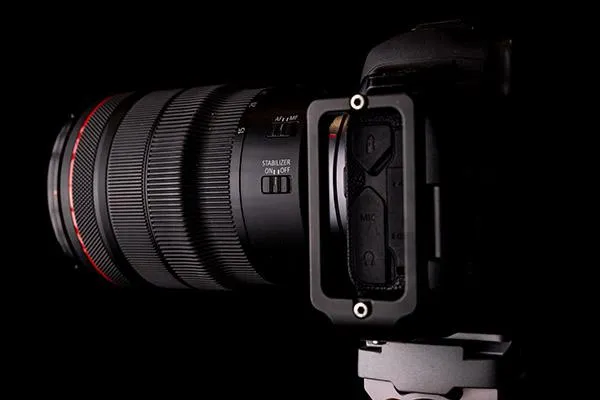
Image Stabilisation: When to Trust It, When to Ditch It
Is Image Stabilisation Actually That Useful? (Here’s the Real-World Truth)
With Tom Woods – Professional Photographer & Educator
Image stabilisation sounds like magic, right? Camera companies love to hype it up like it’s the ultimate solution for blurry photos. But if you’ve ever wondered whether it’s actually worth paying attention to, this one’s for you.
📺 Watch the video below for the full breakdown, or scroll on to read the guide in full:
What Is Image Stabilisation (IS), Really?
At its core, image stabilisation is your gear's way of helping reduce the effects of camera shake—especially when shooting handheld with slower shutter speeds. Whether it’s built into your lens (OIS) or your camera body (IBIS), IS is designed to help you get sharper shots when your hands aren’t rock steady.
Manufacturers often claim it’ll let you shoot 3–5 stops slower than usual and still get a clean, sharp result. And yep, sometimes that’s true—especially in low-light situations or when you're zoomed in tight.
Where It Doesn’t Work As Well: Mid-Range Shutter Speeds
A common misconception? That IS will save your shot no matter what. But at shutter speeds between 1/200th and 1/640th of a second, stabilisation systems often aren’t doing a whole lot. They're caught in a bit of a dead zone—not slow enough to activate fully, not fast enough to guarantee sharpness without help.
Here’s a rough rule of thumb:
Match or double your focal length with your shutter speed.
So if you’re shooting with a 400mm lens, aim for at least 1/800th of a second for crisp handheld results.
Myth Buster: IS Doesn’t Freeze Motion
A big one photographers get wrong: IS doesn’t help with subject movement—only your movement. So if your subject is sprinting, surfing, or flying through the air, you’ll still need a fast shutter speed to lock it in sharp. No amount of stabilisation will fix motion blur from a moving subject.
Where IS Really Shines: Video Work
Handheld video without IS? Wobbly city.
This is where IS (especially in-body IBIS combined with lens OIS) truly helps smooth out those micro-jitters and make your handheld footage look polished and pro. Just don’t get lazy—tech can’t replace good shooting technique.
When to Switch It Off
There are times when stabilisation can actually do more harm than good. Here’s when to flick the switch off:
Using a tripod or monopod
Shooting long exposures
Capturing HDR frames
Doing panning shots (without panning mode)
In these cases, IS can cause blur by trying to correct motion that doesn’t exist—or by fighting your intentional movements.
Bottom Line: Know When to Use It, and When to Trust Yourself
IS can be an absolute game-changer—when you understand how to use it.
But relying on it too much, or expecting it to cover for slow shutter speeds and shaky technique? That’s a recipe for disappointment.
Want to level up your confidence and sharpen your technique so you’re not relying on features like IS? That’s exactly what I teach inside my Confident Photographer Course.
👉 [Learn more about my "Confident Photographer" Program HERE]
About the Author
Tom Woods is a professional commercial and surf photographer based on the Sunshine Coast, Australia. With over 25 years of experience and thousands of published images under his belt, he now also mentors photographers worldwide through online courses and coaching. Photography services website is: www.stimages.com.au
COMPREHENSIVE PHOTOGRAPHY
PROGRAMS
Click below to learn more about our impactful photography programs
WATER - LAND - PRO - BEGINNER - ADVANCED
Copyright 2022 All Rights Reserved





